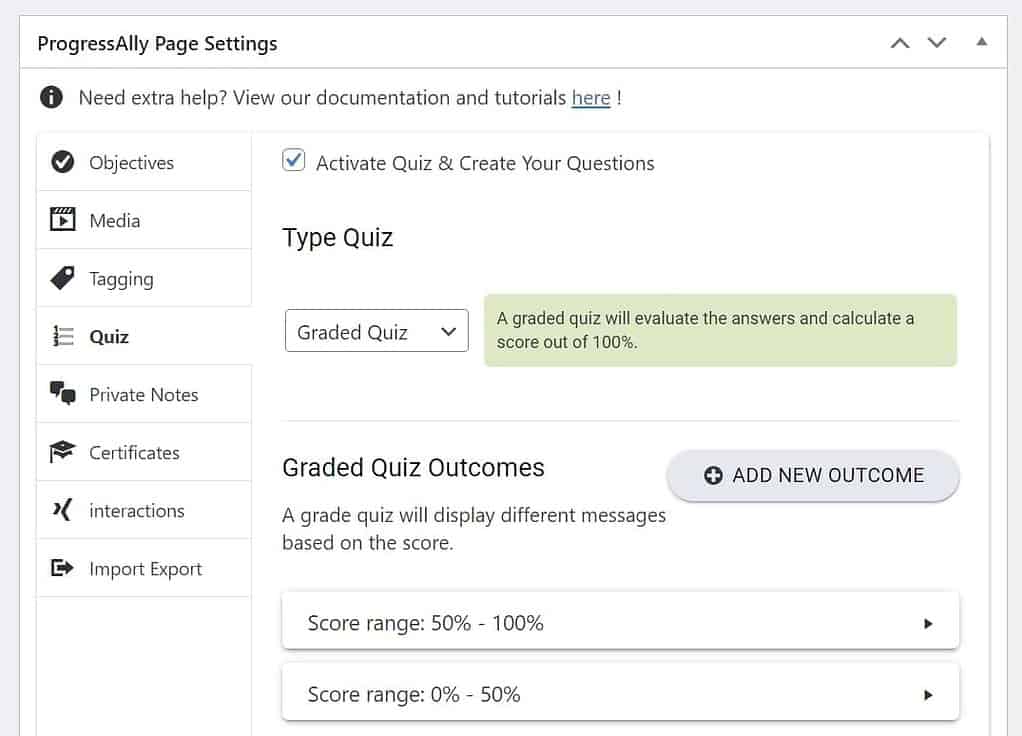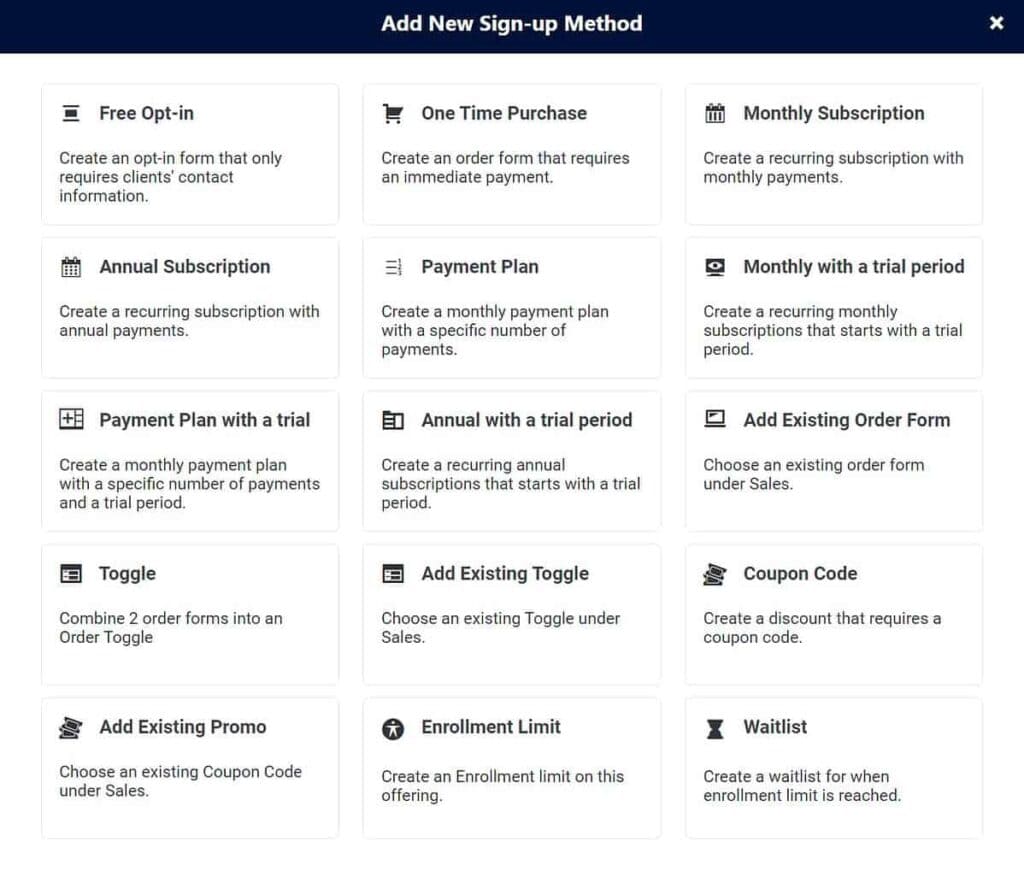Looking to turn your passion for education into a rewarding entrepreneurial venture? The answer may lie in creating your very own e-learning platform.
The global shift towards digital learning, and subsequent potential to reach a worldwide audience, makes developing an e-learning platform an exciting opportunity.
You’ll be able to make a massive impact on education while boosting your business’s growth potential.
In this article, we’ll provide an in-depth blueprint for creating a successful e-learning platform from scratch with the help of AccessAlly.
So, whether you’re an entrepreneur, business owner, educator, or professional in the e-learning industry, you’ll have all the tools you need to navigate the e-learning platform development process.
The benefits of e-learning platforms
Building an e-learning platform comes with a myriad of advantages that enhance the learning experience and provide significant operational and financial benefits, including:
- Accessibility: E-learning platforms remove geographical and time constraints, allowing learners to access courses and materials from anywhere and at any time. This is particularly useful for learners with busy schedules or those based in remote areas.
- Scalability: An e-learning platform can cater to a large number of learners simultaneously, making it easier to scale educational offerings compared to traditional, in-person methods.
- Cost-effective: Online learning platforms offer economic benefits, too! They can reduce, or even eliminate, costs associated with physical classrooms, travel expenses, and printed materials, leading to massive savings.
- Personalized learning paths: By offering self-paced learning, your platform will be able to accommodate individual learning styles and speeds, enhancing the overall learning experience for your remote students.
- Rich content variety: A wide variety of content can be incorporated into e-learning platforms. From video and audio to interactive quizzes, you’ll be able to host a rich array of content types that’ll keep your learners engaged.
- Data tracking: E-learning platforms offer powerful tracking capabilities, allowing you to analyze learner data and progress to inform improvements to course creation and delivery. Ultimately, this can lead to more effective learning with better outcomes.
- Global reach: A digital learning hub is much more inclusive than traditional in-person classrooms, allowing you to expand your potential customer base, which is particularly important in an increasingly globalized world.
- Community building: Thanks to features like discussion forums and group projects, e-learning platforms can foster a sense of community among learners. This sense of camaraderie can also play a crucial part in retaining learners.
The importance of e-learning platforms is further underscored by the growth of the e-learning market – which is projected to hit $848.12 billion at a Compound Annual Growth Rate (CAGR) of 17.54% by 2030.
These figures indicate a promising future for online education and lucrative opportunities for anyone looking to build their own e-learning platform.
The different types of e-learning platforms
A wide variety of e-learning platforms are on the market, each serving a specific purpose and catering to different learning needs.
Understanding the differences between these platforms can help you identify which best suits your particular objectives.
Learning management systems
Learning management systems (LMS) are designed to manage and deliver online courses and training programs, and are ideal for educational institutions or businesses that need to provide structured, formal education.
An LMS offers a centralized platform for course management and delivery, learner assessment, and progress tracking.
However, they may lack the flexibility and informal learning opportunities other types of platforms provide.
Massive open online courses
Massive Open Online Courses (MOOCs) provide free or low-cost access to educational content from renowned institutions, and they’re best suited for independent learners seeking to expand their knowledge at their own pace.
A MOOC gives learners access to a wide range of courses across various disciplines, often taught by experts in the field, but some learners might need additional support and personalization.
What’s more, the completion rate for MOOCs tends to be low.
Corporate training platforms
By focusing on employee development and skill enhancement, corporate training platforms are popular within businesses looking to train employees – whether that means improving the skills necessary in their current roles or preparing them for new ones.
These platforms often include features like progress tracking, performance management, and content creation.
Despite this flexibility, corporate training platforms can lack the engaging, interactive elements other platforms provide.
Online tutoring and coaching platforms
Because online tutoring and coaching platforms provide personalized support and guidance, they’re ideal for learners who need one-on-one assistance or tailored learning experiences.
A tutoring platform often includes features like live video tutoring, interactive lessons, and personalized feedback – which can, sometimes, make them more expensive than other less personalized services.
Social learning platforms
Social learning platforms focus on collaborative learning and community-building by providing a hub for learners to interact, share knowledge, and learn in a collaborative environment.
A social learning platform often includes discussion forums, collaborative projects, and social networking.
But, they can also lack the structure and formal learning opportunities provided by platforms like LMS or MOOCs.
When choosing a platform type, you’ll need to consider your needs and those of your learners. It’s essential to weigh up factors like the platform’s purpose, the kind of content you plan to deliver, your target audience’s learning needs and preferences, and your budget.
By conducting a needs assessment, you’ll be able to identify your requirements and evaluate different learning platforms based on your specific criteria – and confidently choose the e-learning platform that suits you and your learners!
Developing strategies for efficient e-learning platform creation
You’ll need to take a strategic approach to creating an e-learning platform if you want to ensure its success and sustainability.
Step 1: Identify your goals
Defining clear objectives and goals for your platform could include identifying your target audience, determining desired learning outcomes, and setting goals for revenue generation.
You may also want to consider different business models.
Remember to consider your goals, target audience, and content when choosing between models.
- Subscription/membership model: Users pay a recurring fee to access your content.
- Pay-per-course model: Users pay a one-time fee for each course they take.
- Combined model: Make some content available for free and lock some content behind a paywall.
Step 2: Choose platform functionalities
Identify which features your platform needs. This will depend on your chosen niche, the needs of your target audience, and the desired learning experience.
For example, if you’re targeting self-directed learners, you’ll want to include features like progress tracking and flexible learning paths.
Choosing the right technology stack and development approach is another critical step – and you may need to decide between a custom development, using an e-learning platform like AccessAlly, or a combination of both.
Factors to consider include:
- Your budget.
- The need for scalability as your user base grows.
- The ability to integrate with other systems.
Step 3: Establish a content strategy
Developing a content strategy includes creating, curating, and organizing high-quality learning materials.
Your content should always be relevant, aligned with your learners’ objectives, and as engaging as possible!
Step 4: Ensure consistent design
Implement a user-centric design across your platform, focusing on usability, accessibility, and engagement.
This means ensuring that your platform is easy to navigate and accessible to users with different abilities, and engaging enough to keep learners coming back.
Step 5: Conduct regular platform analysis
Planning for platform maintenance, updates, and continuous improvement is a pivotal part of platform creation.
Technology and user expectations evolve rapidly, so your platform should be designed with adaptability in mind.
Regularly review user feedback and analytics to identify areas for improvement and ensure your platform continues to meet the needs of your learners.
Steps to develop an e-learning platform with AccessAlly
AccessAlly is a powerful plugin that allows businesses to host a wide range of offerings, including courses, memberships, downloads, communities, and coaching programs – all in one place.
Thanks to its suite of robust features, AccessAlly is an important tool in the kit of anyone looking to build an effective e-learning platform, and we’ll guide you through the process of creating your platform with AccessAlly in the steps below.
1. Utilize AccessAlly’s flexible course builder
Want to create customized courses with minimum hassle? AccessAlly makes it easy! You’ll be able to generate courses with any number of modules, lessons, quizzes, and more.
Courses can also be designed with a flexible structure, integrating progress tracking and features like video bookmarks.
The platform’s drag-and-drop interface simplifies the creation and organization of course content.
It can be used for various content formats, including text, images, audio files, video lessons, quizzes, and interactive elements.


Furthermore, AccessAlly allows you to create quizzes, assessments, and assignments for interactive learning experiences.
This includes personality tests, scoring tests, and pass-fail quizzes.
Giving your students a dedicated space to upload assignments and receive timely feedback has its own benefits, too.
You’ll promote continuous improvement through constructive criticism, encourage student participation, and foster an engaging learning environment.
2. Set up bulk course enrollment
Bulk course enrolment (or cohort-based learning) involves enrolling a group of students into a course simultaneously, allowing them to progress together.
With AccessAlly’s bulk course enrollment feature, content creators and corporate training providers can sell and manage course access for groups, teams, or corporations.
The feature also simplifies the process of enrolling large groups of users and supports business growth by eliminating the need for individual registrations.
3. Provide personalized support
Personalized support in e-learning is crucial.
It caters to individual learning styles and paces, provides a student-centered experience, and ensures that real-time assistance is always available.
AccessAlly offers robust progress-tracking capabilities, including real-time student or employee progress monitoring.
This is visually represented through progress bars, pie charts, and ‘Checklists’ mapping the user’s journey, enhancing clarity and motivation.
AccessAlly’s integration with email marketing systems, like ActiveCampaign, also enables targeted communication based on a student’s progress or engagement level.
You’ll be able to provide relevant resources and assistance, and ensure that your students get the support they need whenever they need it.
4. Track progress
Progress monitoring is crucial in e-learning as it facilitates targeted support, personalizes learning, and optimizes course content.
Course creators can release content conditionally based on student activity and implement structured, sequential learning.
AccessAlly also provides comprehensive reports on individual user progress and overall trends, offering insights into content engagement and completion rates.
These capabilities allow course creators to identify learning challenges, provide targeted support, and enhance user satisfaction.
Moreover, these insights enable course creators to refine course content, aligning it more effectively with learners’ needs and improving overall course quality.
The end result is an improved learning experience that is dynamic, personalized, and more efficient.
5. Maximize engagement through gamification
Gamification involves applying game-design elements to non-game contexts, like e-learning services, to engage users and enhance learning. It boosts motivation, retention, and satisfaction, making it an invaluable feature for your platform.
AccessAlly’s gamification features, including badges, points, and leaderboards, celebrate learners’ progress.
In turn, this sparks competition and provides recognition, which enhances the overall learning experience.
The AccessAlly ‘Choose Your Own Adventure’ narratives and surprise prizes are particularly effective, and add extra excitement to courses, keeping learners motivated.
The platform’s performance-tracking tools also provide a clear view of learners’ progress and achievements, promoting continuous engagement.
Badges and points serve as tangible evidence of accomplishment, while leaderboards foster a healthy competitive environment.
Gamification elements keep your learners eager to complete their courses.
They can also significantly increase user retention and foster a real sense of achievement.
6. Optimize your e-learning platform for success
Your learners will have diverse needs and abilities, which is why it’s crucial to implement a user-friendly interface across your e-learning platform.
It’s also important to regularly update and expand course offerings to keep your service relevant and attract new learners.
Of course, high-quality content is another must. You can achieve this by collaborating with subject matter experts and using multimedia resources.
AccessAlly’s ability to send data back to your CRM and integrate with email marketing platforms aids this process.
Feedback mechanisms are useful when it comes to gathering user insights and enabling data-driven platform improvements.
You’ll also need to develop an effective marketing strategy to reach your target audience and drum up interest in your platform.
To maximize revenue, it’s also worth exploring your monetization options, like subscriptions, one-time purchases, and tiered pricing.
AccessAlly can help you out here, offering recurring subscriptions, one-click upsells, coupons, and other monetization methods.


7. Stay up to date with new technologies and trends in e-learning
Staying current with emerging technologies and trends in the e-learning industry is pivotal for growth and scaling. Technological advancements can significantly enhance the learning experience, engagement, and outcomes.
- Artificial Intelligence (AI) and machine learning breakthroughs: AI and machine learning have revolutionized the world of e-learning, offering personalized experiences and adaptive content tailored to individual learning styles and paces.
- Growing traction in mobile e-learning: A responsive, mobile-friendly design (and mobile app) is essential to meet the increasing demand for learning on the go, providing access to learning materials anytime, anywhere.
- Utilizing Virtual Reality (VR) and Augmented Reality (AR): Both technologies offer immersive, interactive learning experiences. They can transform abstract concepts into tangible experiences, making learning more memorable.
- Rising awareness of social learning: Social learning emphasizes the importance of collaborative tools and features. Peer interaction and collaboration can foster a strong sense of community, too.
- Harnessing data analytics and learning analytics: These analytic methods are crucial for tracking user progress, identifying areas for improvement, and making data-driven decisions. Collecting these insights can also optimize learning paths, enhance content, and improve the user experience.
AccessAlly stays ahead of the curve with its integrated tech stack, consistent rollouts of developments and updates, and data-driven insights.
Embracing these technologies and trends ensures your platform remains competitive and effective in delivering high-quality e-learning experiences.
Get started with AccessAlly today
The e-learning market is experiencing a boom – and it’s not hard to see why.
They’re accessible, scalable, cost-effective, and provide handy functionalities like personalized learning paths, rich content variety, and data tracking.
Building your very own e-learning platform can be a lucrative venture and a great way to make a real impact on the world of education.
You’ll be able to provide a collaborative hub for learners worldwide and expand your business’s reach.
However, many types of e-learning platforms are available, each serving a specific purpose.
Whether it’s Learning Management Systems (LMS), Massive Open Online Courses (MOOCs), corporate training platforms, online tutoring and coaching platforms, or social learning platforms, the choice depends on your needs and the needs of your intended learners.
Creating an e-learning platform requires a strategic approach, from defining clear objectives and goals, to identifying essential features and functionalities, and choosing the right technology stack.
You’ll also need to develop a content strategy, implement a user-centric design, and plan for platform maintenance, updates, and continuous improvement.
Fortunately, AccessAlly can help streamline the process!
With a flexible course builder, bulk course enrollment, personalized support, progress tracking, and gamification features, AccessAlly has everything you need to create an effective e-learning platform – and stay up-to-date with new technologies and trends in e-learning.
If you’re ready to take your first step into the world of e-learning, and build your e-learning platform from the ground up, you can count on AccessAlly. Don’t wait – start shaping the future of digital learning today!







